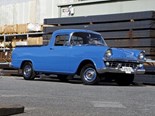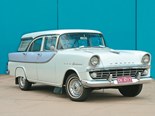1960-1962 Holden FB-EK - Buyer's Guide
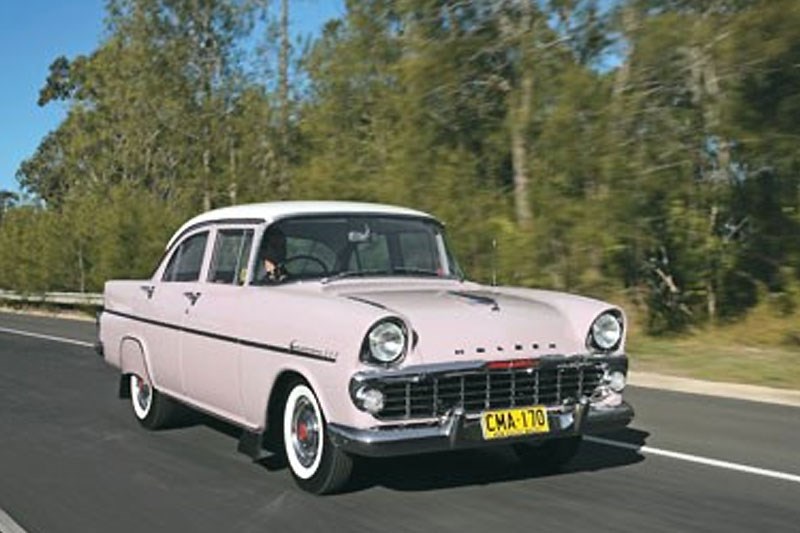


|
Acclaimed as the most exciting new cars in years, the Holden FB/EK drew heavily from a five year old Chevrolet
1960-1962 Holden FB-EK
With almost 50 per cent of the Australian car market in its keeping, Holden as the 1960s dawned, didn’t have to do much at all to maintain its dominance. Or so it seemed.
Although the brochure proclaimed Holden’s FB as ‘The Most Exciting New Car In Years’, the design drew heavily on the shape of a Chevrolet that was launched five years earlier. Adding to the cynicism of it all, the mechanicals and suspension in the FB were pretty much the same as they had been since 1948.
The FB came in Standard and Special trim with four separate body designs including a panel van that finally offered a taller and vastly more practical load area.
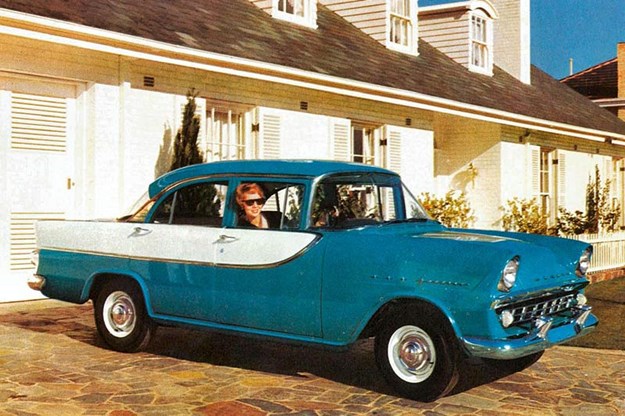
Without lengthening the wheelbase, Holden added 140mm to FB’s overall length; most of it devoted to fins and attention-seeking headlamp shrouds. Inside was a welcome addition to shoulder room and the promise that its front and rear bench seats could each comfortably accommodate three beefy Aussies.
| Read next: 1962 Holden EK review
The design of the ‘grey’ six-cylinder engine was unchanged as well, but capacity increased from 2.17 to 2.26 litres. When combined with a slight increase to the compression, peak power rose from 52 to 55kW.
The Special came with a cigarette lighter, two-tone seats and extra stainless-steel trim. Across the range was a shorter steering column and dished wheel but other ‘safety-related’ items like the heater/demister and power-assisted brakes remained optional.
Initial FB sales were astounding and exceeded even the numbers set a few years later by the much-admired EH. Initial demand saw early cars roll out of showrooms at a rate of 20,000 units a month and within just 17 months, 147,747 had been made.
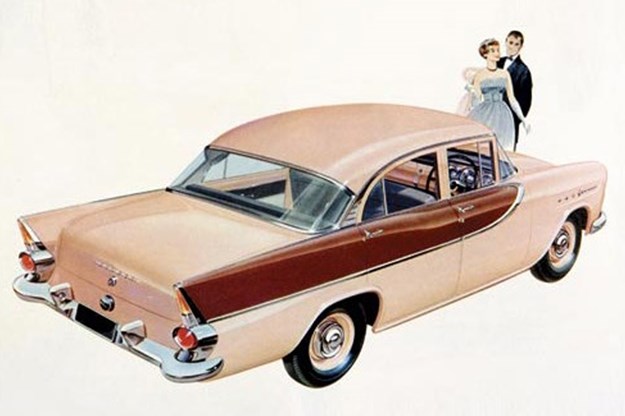
On 2 May 1961 and despite a ‘credit squeeze’ that savaged new vehicle sales, the EK Holden was launched. Most obvious among its external changes were the new grille and single rubbing strip to replace the big sweep of stainless steel that characterized FB Specials. An extensive accessories list allowed buyers to upgrade and personalize their Holden, with extras including a radio, weather-shield and mudflaps. The ‘camping body’ was a boon to interstate travellers, allowing the seats to recline into a full-sized bed and save a fortune on motel bills.
| Read next: 1961 Holden EK reader resto
Holden had come late to the automatic transmission party but was determined to respond to the challenge thrown out by Ford’s new Falcon. Three-speed Hydramatic Holdens were heavily promoted to female drivers and business users including cab drivers who spent hours in city traffic.
Improvements to the EK design included new vinyl for the seats and electric windscreen wipers replacing the frustrating vacuum system that went slower when needed most. A larger intake helped improve ventilation but that heater/demister would still cost extra.
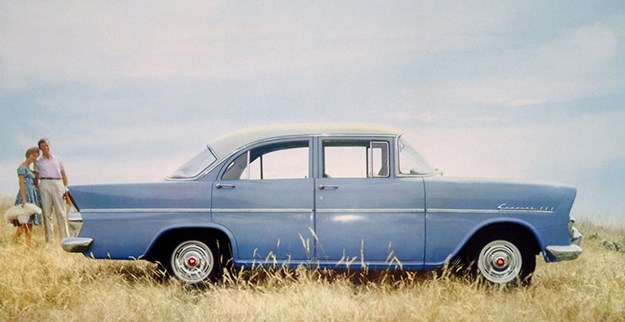
MARKET REVIEW
All-up, more than 320,000 of the big-fin Holdens were built and the numbers that survive come as no surprise. What does shock is the $40,000+ being asked and occasionally realised by exceptional cars.
Looking back 20 years, the average value of an FB/EK was $4200 and the best cars cost no more than $8000. Today, anything selling for less than $10,000 will need lots of work and one that can be put into immediate service as a weekend cruiser is unlikely to be found below $20,000.
Joining a club that caters to early-modern Holdens or visiting one of these clubs’ display days is the best way to get close to good quality FB/EKs and perhaps purchase one. Cars with a good selection of genuine ‘Nasco’ accessories bring better money – often significantly better – than those without.
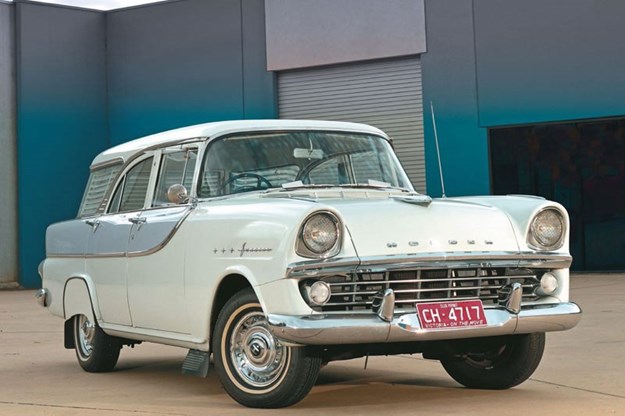
Modified cars are reasonable common and a later ‘red’ motor, four-speed gearbox and front discs isn’t going to seriously damage long-term value.
BODY & CHASSIS
It’s safe to say that any FB-EK that survives in decent condition will have been subject to some rust repair work. Cars renovated some decades ago may be rusting again so start with inspecting the wheel arches, lower mudguards, sills, door skins, the fire-wall, sub-frame, floors and turret. Tailgate rust is common in wagons and commercial models so listen for creaks and crackling from the hinge boxes. Check the spare wheel compartment as well. Rust repair panels are available from several suppliers and are not too expensive. New lenses are available, but good brightwork is scarce and expensive.
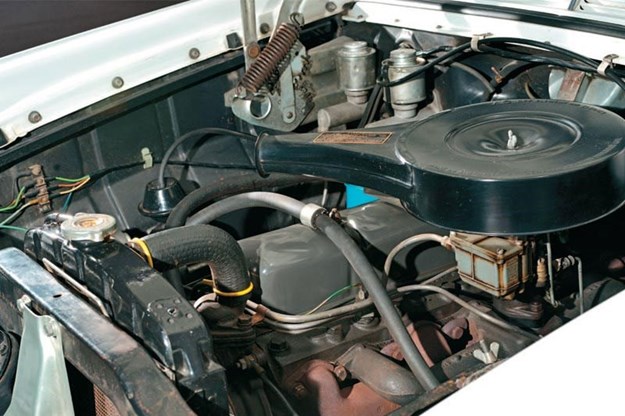
ENGINE & TRANSMISSION
Although discontinued 50 years ago, ‘grey’ Holden engines and parts needed to rebuild them can still be found and are usually not expensive. Converting the FB-EK to a later Holden engine isn’t hard either so there’s no reason that many of these cars won’t remain running for decades to come. Typical problems include piston and crankshaft knocks, oil leaks from the main bearing seal, fuel leaks and cracked exhaust manifolds. The manual gearbox suffers bearing noise, synchro and selector problems but replacements can be located. Hydra-Matics can still be rebuilt. Check the differential for pinion noise (especially in reverse) and oil leaks.
SUSPENSION & BRAKES
FB-EK steering response is indifferent on the best of days and any serious wear will heighten the sensation of disconnection. Look for uneven tyre wear and listen for creaking when the wheel is turned at low speed. Rear leaves flatten and crack with age. U-bolts should be checked for correct alignment and thread damage. Some cars have been converted using a later disc-brake front end, but the original drums in good condition are satisfactory. Use gentle pressure on the pedal while driving to feel for misshapen drums. Constant pressure on the pedal for 30 seconds when stationary should reveal hydraulic leaks.

INTERIOR & ELECTRICS
Obtaining trim to match the original has become very difficult and some owners are sourcing ‘fleck’ pattern vinyl from US suppliers. Complete sets of locally-made seat coverings are quoted at $2000 or more. Replacement door trims, mats and hood-lining are available but a full kit of body rubber kits can exceed $2000. New handles and switches are available too. Patience and a quick trigger-finger are required if you’re trying to track down rare accessories but they do appear periodically via the on-line auction market. If an FB is to be used semi-regularly, upgrading to electric wipers is worthwhile.
VALUE RANGE Holden FB-EK
Fair: $6000
Good: $18,000
Excellent: $27,000
(Note: concours cars will demand more)
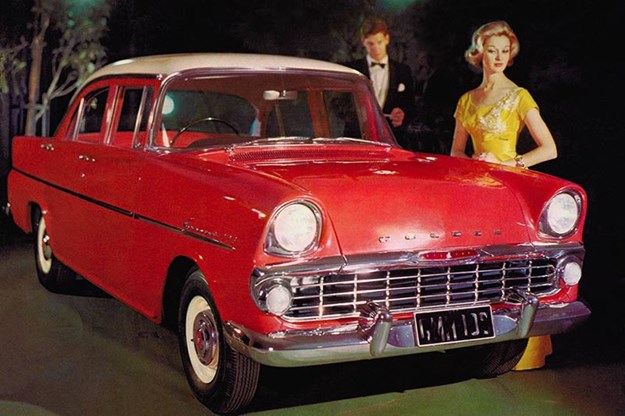
1960-1962 Holden FB-EK
Number built: 174,747 (FB), 150,214 (EK)
Body: steel, integrated body/chassis, four-door sedan or station wagon, utility & panel van
Engine: 2262cc in-line six-cylinder with overhead valves and single downdraft carburettor
Power & torque: 55kW @ 4000rpm, 162Nm @ 1400rpm
Performance: 0-97km/h 20.4 seconds, 0-400 metres 22.0 seconds (FB manual)
Transmission: three-speed manual, three-speed automatic
Suspension: independent with coil springs, control arms and anti-roll bar (f) live axle with semi-elliptic springs and telescopic shock Brakes: drum (f) drum (r)
Tyres: 6.40x13 cross ply
Unique Cars magazine Value Guides
Sell your car for free right here
Get your monthly fix of news, reviews and stories on the greatest cars and minds in the automotive world.
Subscribe

.jpg)








